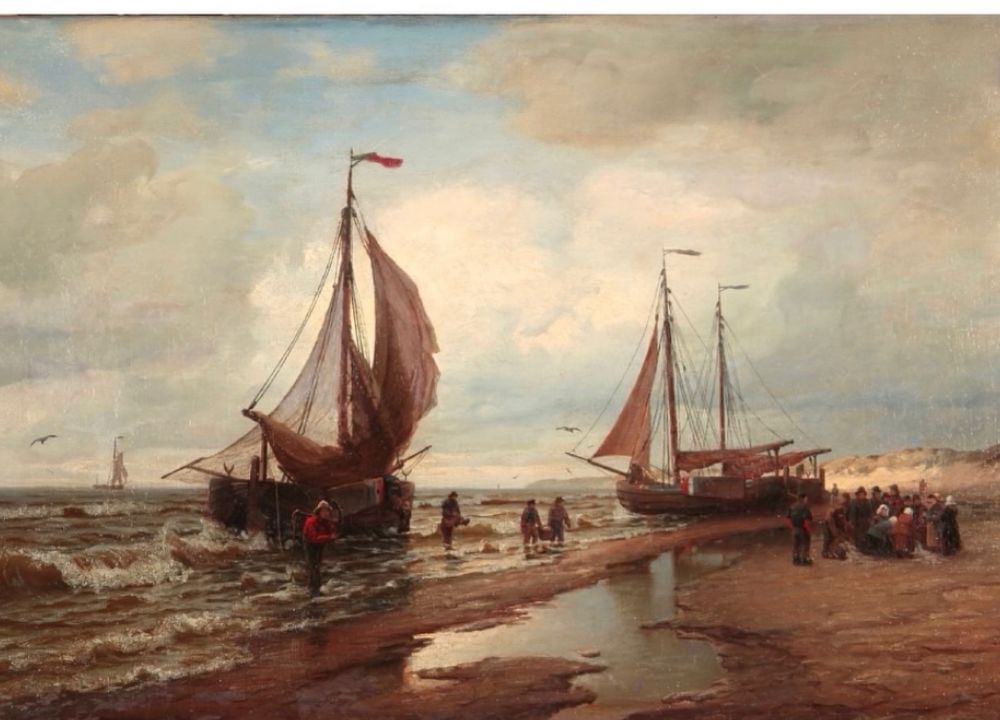Landscape painting exhibition opens at the A. Kasteev State Museum of Arts

The exposition allows us to trace the development of the landscape genre in the cultures of different countries and shows its significance as a reflection of national identity and aesthetic ideals.
Landscape painting is an expression of love for nature, the mastery of conveying its beauty, a subtle instrument with which to explore culture and traditions. Each painting is a window into the world. Traveling through these "windows," the viewer discovers a visual language that speaks of values and ideals, of the peculiarities of social life and philosophical views of different eras.
The first landscapes date back to the Neolithic era, when people conditionally painted the sky and the earth, as can be seen in the frescoes of Ancient Egypt and Antiquity. Interest in landscape begins to develop in the Early Renaissance, in the 15th century. As a genre of painting, it has come a long way from a secondary element of religious and historical canvases to an independent art form.
The exhibition features works from the 17th century, such as Albert Cuyp's Landscape with Cows and Winter Landscape by an unknown master. They demonstrate the authors' ability to capture not only the external recognizable features of nature, but also to convey the atmosphere of its transitional states, the depth of space, the play of light and shadow. The Dutch masters focused on a truthful depiction of unpretentious rural areas, animals, and natural motifs typical of the region, which became a new stage in the history of fine art.
Landscape painting of Germany is represented by artist-researchers who captured mountain ranges, forest landscapes and architectural elements, saturated with romantic and symbolic meanings. Works by unknown authors, such as "Mountain Landscape" (presumably by Anton Feistenberger), indicate the complexity and diversity of the German tradition in the transmission of nature.
Italy of the 18th century can be seen in the veduta "Architectural Landscape" by Francesco Battaglioli, where the author creates an elevated image of a beautiful city, focusing primarily on architecture. Veduta is a type of landscape genre that took shape in Venetian painting. It was widespread in the 18th century and is a painting with a detailed depiction of everyday urban landscapes and famous architectural monuments.
The French school in the exposition demonstrates various stages in the development of the genre. Among the works reflecting the aesthetic searches of the 19th century, a special place is occupied by Prosper Marilhat's "The Bank of the Nile," which conveys a romantic sense of the exoticism of distant lands. Guden Theodore's "Storm at Sea" introduces the marine landscape, which became widespread in the era of Romanticism. Also significant are the paintings of Jean-Baptiste Camille Corot "Landscape with a Lake" and "Stormy Day in the Pas-de-Calais." Nature in them appears not only as an object of representation, but also as a source of mood. The Barbizon school artists, to which Corot belonged, sought to capture the subtlest states of the environment: the movement of the wind, the variability of light, the fluidity of clouds. Their works are distinguished by softness and lyricism, which are opposed to the academic rigor of classicism or the emotional intensity of romantic art.
The Russian school of landscape occupies a special place in the exposition. Here are represented the works of such masters as Ivan Aivazovsky, Socrates Vorobyov, Vladimir Orlovsky, Alexei Bogolyubov, Lev Lagorio and others. The path of the Russian picturesque landscape reflected the change in worldviews and moods of society: from classical rationalism, with its standard, harmonious grandeur of nature, through romanticism, which saw the surrounding world as a mirror of human feelings and emotions, to realism, which directed the experience of its predecessors to comprehend reality.